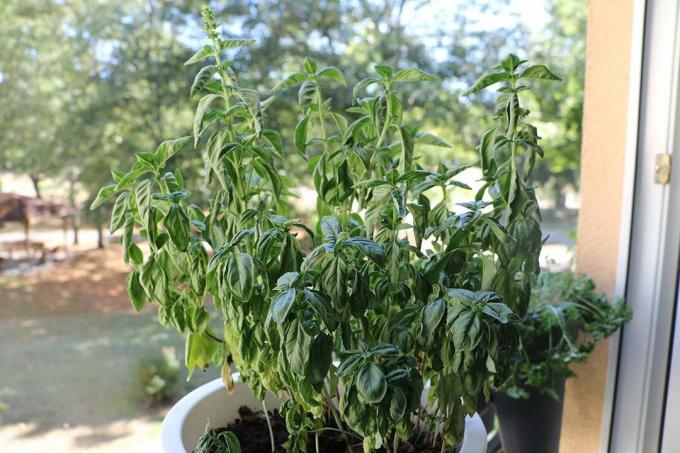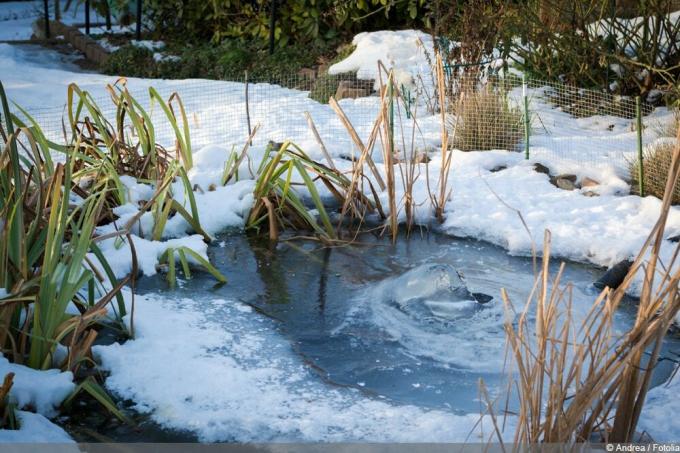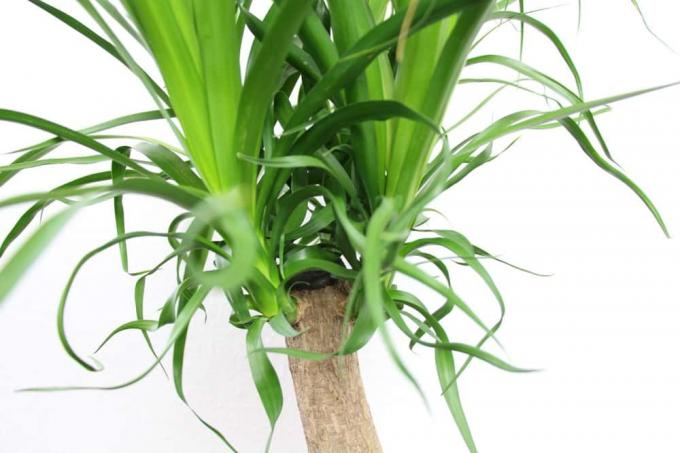

Table of contents
- Instructions for wintering
- location quality
- planting time
- Overwinter in the bed
- Flower boxes and tubs need winter protection
- Hardy chrysanthemum varieties
- Asian chrysanthemums are hardy
- Conclusion
In the autumn garden, the lavish blooms of chrysanthemums can only rarely be admired. There is uncertainty among home gardeners as to whether chrysanthemums are hardy and will therefore thrive for several years. As a result, the colorful perennials are only allowed to be on the balcony and terrace for a short season and are then disposed of. Find out here how hardy winter asters actually are. A tried and tested guide to overwintering shows the premises under which the picturesque flowers in beds, tubs and in the cemetery stand up to frost and snow.
Instructions for wintering
As the short excursion into the botanical basics shows, you can only assume that it is a completely hardy perennial when caring for Asian wild species. In order for the enchanting hybrids to survive the cold season in beds, balcony boxes and tubs, various requirements must be observed. The following guide explains in detail how to do it right.
location quality
Wetness is the biggest enemy of hardy chrysanthemums. If waterlogging can be reliably ruled out when choosing a location, even freezing frost will not cause any problems for the plants. In the modern interpretation of the prairie garden, in the gravel bed or rock garden, the lavish magnificent perennials are in good hands. A permeable, loose and yet nutrient-rich soil dominates here, in which rainwater can run off quickly. The better the garden bed simulates North American prairie conditions, the more effectively your chrysanthemums will be able to stand up to harsh winter weather. The ideal location is like this:
- Sunny to shady
- Ideally warm, sheltered and on a gentle slope
- Loamy-sandy to sandy-humic, preferably coarse-grained soil
- Fresh to moderately dry and with good drainage

Normal, good garden soil is modified with a simple tillage to meet the requirements. For this purpose, dig out the bed about 30 cm deep in order to create a drainage made of gravel or grit at the bottom. Thin out a third of a heavy excavation with a lot of clay with sand and fine-grain chippings, which also ensures good permeability. Fill in this optimized garden soil over the drainage and compact it moderately with a shovel, a board or a lawn roller.
Tip:
A corresponding substrate is recommended for chrysanthemums in pots and balcony boxes. A high-quality potting soil that has been enriched with quartz sand, perlite or fine-grained grit does a good job. Some pieces of pottery shards on the bottom of the vessel act as water-bearing drainage and prevent waterlogging.
planting time
Chrysanthemums planted in autumn have little chance of a healthy overwintering. The time for rooting in the bed and substrate is far too short for sufficient winter hardiness to result. If, on the other hand, you choose the weeks between the end of April and the end of May as the planting time, the time window until winter is open long enough for the perennials.
Tip:
When buying your autumn chrysanthemums, leave out any plants that have come from a warm greenhouse. Instead, use varieties that the gardener lets grow in the bed and field so that they are already used to the harsh outdoor climate as young plants.
Overwinter in the bed
Chrysanthemums are fertilized for the last time when they start flowering in late summer or early autumn. By administering a potassium-rich fertilizer in August/September, you support blooming and winter hardiness in equal measure. For example, Thomaskali contains valuable potassium as well as phosphorus and magnesium. Comfrey manure fulfills this task in ornamental gardens managed in a manner close to nature thanks to its natural potassium content. Potassium in particular strengthens the cell walls in the tissue and lowers the freezing point of the cell water. Chrysanthemum hybrids also support you with the following precautions:
- Before the first frost, pile up the root disc with autumn leaves and needle brushwood
- Protect the plants in wind-exposed locations with translucent, breathable fleece
- Alternatively, attach brushwood or pine fronds all around
Please do not cut back the perennials after flowering. The withered inflorescences serve as natural winter protection. Only in February or March cut off all the shoots down to the ground to make room for fresh shoots.
Flower boxes and tubs need winter protection
Planted in the bed, the root ball of a chrysanthemum is well protected from the hardships of winter. The perennials do not get this security in the comparatively small substrate volume of balcony boxes or tubs. The greatest danger here does not come from frost, but from a repeated alternation between freezing and thawing. Within a short period of time, the cell walls in the tissue are contracted and stretched so that they can burst. It doesn’t have to be, because you can effectively prevent winter damage with the following measures:
- Before the onset of winter, place planters in front of a house wall that is protected from the wind and rain
- Place the box and bucket on blocks of wood or polystyrene
- Cover the jars with bubble wrap
- Spread autumn leaves, peat moss or wood shavings on the substrate

Although the cover is indispensable as winter protection, it is not very decorative. Wrapped in jute, sackcloth and colorful ribbons, the foil no longer catches the eye. In garden practice, coconut mats have proven their worth as a winter coat for planters and pots that are decorated with pretty stickers.
Tip:
Despite all protective measures, pots with a diameter of less than 30 cm are too small for wintering on the balcony or terrace. Before the first frost, move the containers to a bright winter quarters with temperatures around 5 degrees Celsius. Alternatively, sink the pot and chrysanthemum into the ground in a sheltered location and spread a thick layer of leaves over them.
Hardy chrysanthemum varieties
The following hand-picked varieties will let your garden shine in wonderful, warm colors at the end of the season. Expertly overwintered, as this guide recommends, the chrysanthemums repeat the autumnal blossom spectacle every year.
Ray Chrysanthemum 'Golden Yellow'
The classic variety with the radiant, golden-yellow flowers is a popular cut flower for vases and bouquets. What is less known is that the chrysanthemum variety is perennial and hardy. In the right place, the extravagant flower shines like the sun.
- Growth height: 50 to 60 cm
- Flowering period: August until the first frost
,Poetry' (Chrysanthemum Indicum Hybrid)
Flower splendor in poetic dimensions finds its way into the garden and on the balcony with this chrysanthemum variety. White ray florets frame a yellow center in a triple tier. With a diameter of 5 cm, the countless flowers attract everyone's attention. Although the plant is hardy, the flowers turn slightly pink after the first frosty nights.
- Growth height: 40 to 50 cm
- Flowering period: October to December
'bee'(Chrysanthemum hortorum)
With its warm, deep yellow, double flowers, this premium variety cheers us up on the first cloudy days of autumn. The chrysanthemum owes its stable stems and robust winter hardiness of up to -17.7 degrees Celsius several awards in perennial sightings and is therefore particularly recommended.
- Growth height: 60 to 80 cm
- Flowering time: September to November
'White Bouquet' (Chrysanthemum Indicum Hybrid)
Cream-white pompom flowers and a seductive fragrance well into autumn. These attributes distinguish the picturesque perennial. Behind their romantic charm lies a good winter hardiness, which only requires the precautions of these instructions for wintering. With its majestic size, this chrysanthemum is perfect for fence watching, as it also provides helpful support to keep it from tipping over in strong autumn winds.
- Growth height: 90 to 120 cm
- Flowering time: September to November
'mary stroker'(Chrysanthemum rubella)
The simple disc flowers shine in a warm ocher yellow and are enthusiastically swarmed by busy bumblebees, bees and butterflies. The perennials like to gather in small groups to give the late autumn garden a floral abundance.
- Growth height: 40 to 60 cm
- Flowering period: August to December
'Clara Curtis' (Chrysanthemum Zawadskii hybrid)
Native to Siberia and East Asia, this chrysanthemum trumps its peers in terms of hardiness. Even as a hybrid, the perennial can withstand temperatures down to – 23.3 degrees Celsius in the bed, provided that it is granted the location recommended in these instructions. As 'Clara Curtis' unfurls her pink flowers as one of the first autumn chrysanthemums, she will often combined with later flowering varieties for a particularly long flowering period in the bed and on the field Balcony.
- Growth height: 70 cm
- Flowering period: July to September

Asian chrysanthemums are hardy
Within the diverse chrysanthemum genus, a small group of select species are hardy. The focus is on the autumn chrysanthemum (Chrysanthemum indicum), which is native to North and South Korea as well as Taiwan and some Chinese provinces. The climate there, at least in winter, is comparable to Central European conditions, so that the wild species can withstand temperatures down to -20 degrees Celsius without being harmed. The lesser-known ones also fall into this category chrysanthemum rubella and Chrysanthemum zawadskii, which flower a few weeks earlier and have proven to be extra frost hardy.
The garden chrysanthemum emerged from the hardy autumn chrysanthemum and other East Asian parent plants (Chrysanthemum x hortorum). Thanks to its robust ancestral gallery, this species can also rely on a stable frost resistance of up to -20 degrees Celsius.
In the course of the cultivation of autumn and garden chrysanthemums, other species were crossed to optimize the flowering. However, the lavish flower symphony of hybrids is at the expense of winter hardiness, which weakens to -10 to -12 degrees Celsius.
In contrast, European species, such as Chrysanthemum segetum, Chrysanthemum carinatum or Chrysanthemum paludosumnot hardy. Its flowering period extends from spring to summer. Following seed formation and self-seeding, these annual flowers die off.
Conclusion
The floral splendor of chrysanthemums is not limited to a short stay in the pot. Asian species and their hybrids definitely have the necessary winter hardiness to thrive in the bed for several years. The focus is on Chrysanthemum indicum and Chrysanthemum hortorum, known as autumn chrysanthemum, garden chrysanthemum or winter aster. In order for wintering to be successful, these instructions explain important details from the ideal location and the best planting time to recommended varieties. If these premises are taken to heart, the effort for winter protection in the bed is limited to a protective layer of leaves and, if necessary, a light and air-permeable fleece. Large flower boxes and tubs are given a winter coat made of foil, decorated with colorful ribbons. Chrysanthemums in small pots prefer to move to bright, frost-free winter quarters.
 garden editorial
garden editorial I write about everything that interests me in my garden.
Learn more about overwintering plants

How much frost do horned violets tolerate?
Horned violets are a popular bedding plant that survives the winter. They are planted either in spring or in autumn and overwinter in the beds. They usually do without frost protection, which is why they are also often used as easy-care plants for graves.

Is the dragon tree hardy? 7 tips for wintering
Dracaena, the botanical name of the dragon tree, is not just coincidentally reminiscent of a palm tree. Like the palm trees, it also likes it warm and sunny. He is not hardy and has to hibernate in the house. Here are some tips.

Are asters hardy? 5 tips for wintering
The summer aster and the autumn aster not only differ in their flowering time. When winter arrives, another difference becomes apparent: one dies, the other survives the frost.

Overwintering basil: 7 tips for caring for it in winter
If you want to enjoy fresh basil in winter, you can overwinter it with a little skill. With these 7 tips you will definitely succeed!

Overwintering pond plants | Aquatic plants in winter
The garden pond is an important design element in the garden for many hobby gardeners. With the right pond plants, it draws everyone's attention. The numerous species differ in their appearance, their planting location on or in the pond and, last but not least, their winter hardiness.

Overwintering Yucca Palm - Is It Hardy?
Although yucca palms are indoor plants, they like to be outdoors in the summer. However, most species are not hardy. It is necessary to winter them indoors. You can find out how to do this here.



